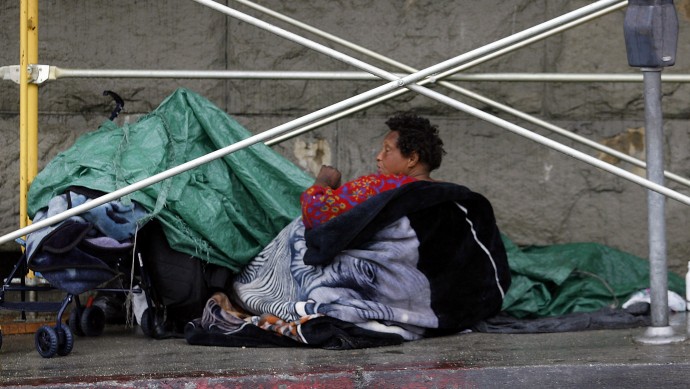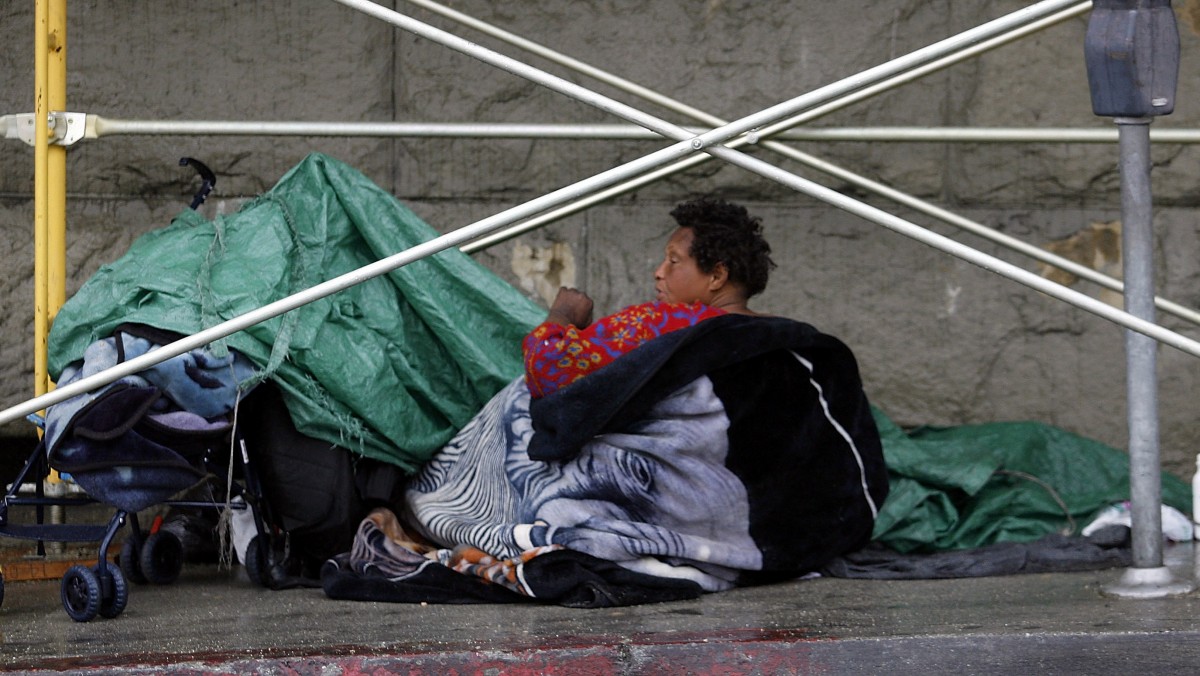
The old proverb says that one person’s trash is another person’s treasure, but in one city in the San Francisco Bay Area, many people’s illegal trash has become over a dozen mini shelters for the homeless.
Nearly half of the 6,215 homeless people in Alameda County reside in Oakland, where many wander the streets following incarceration, hospitalization or foster care. Many homeless individuals create their own shelters out of materials they find in the city’s abundant piles of scattered trash, often illegally dumped at night by local residents.
Illegal dumping, or “midnight dumping,” is the improper disposal of waste, which is typically non-hazardous, at any location other than a permitted landfill or facility. In 2012, employees with the Oakland Public Works Agency picked up 1,624 tons of junk and received 11,500 trash cleanup calls.
Cracked 2x4s, broken furniture, bricks and discarded household drywall may seem like an eyesore that would spur action from residents, but the disposed trash usually goes overlooked, much like the homeless population who surround it.
However, with a little curiosity and creativity, one West Oakland man came up with a way to bring both of these issues to people’s attention.
A few years ago, Greg Kloehn used his artistic and construction abilities to build a tiny home out of the same materials he saw the homeless people in his neighborhood scavenging.
“Stuff people just throw away on the street can give someone a viable home,” Kloehn said, but even when the trash is utilized by the homeless, most items are swept away by municipal workers under Oakland’s public safety laws.
With a rotating team of volunteers, Kloehn constructs the compact abodes on wheels in his studio for under $100 each. His micro homes are strong and watertight, and he paints them in friendly colors, such as yellow, light blue and pink.
In 2013, an estimated 610,000 people were homeless on a given night, and 35 percent of the total were unsheltered, according to a report by the U.S. Department of Housing and Urban Development.
Kloehn says his work is not a permanent solution. In the wake of growing concern for people living in poverty and the environment, though, it is being seen as a temporary fix and a humane gesture to keep people safe while also recycling waste.
According to the U.S. Environmental Protection Agency, Americans generated about 251 million tons of trash in 2012, but only 34.5 percent was recycled or composted, with the rest recorded as waste disposed in landfills or elsewhere.
The worry with mass illegal dumping is that the garbage will end up in creeks and waterways and decrease property values. Despite Oakland’s many attempts to stop the dumping, including the City Council’s recent move to classify the act as a misdemeanor, city officials are realizing the problem can’t be solved by punishment alone.
Kristine Shaff, an Oakland Public Works Agency spokeswoman, said the dumping is “not an individual issue, it’s not a criminal issue – it’s a social issue.”
Viewed through a social lens, perhaps the efforts of Kloehn, as well as other environmental tiny house movements, can turn the world’s tons of waste into a solution to two very worrying issues.


